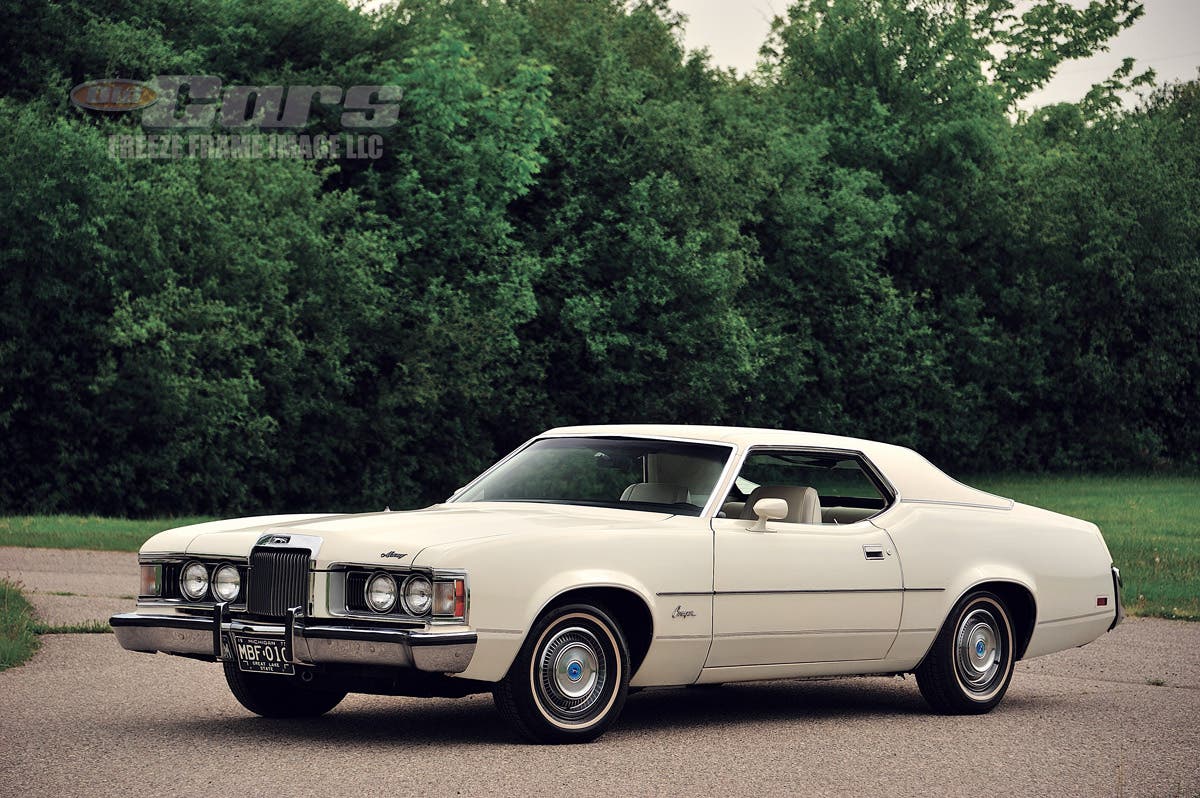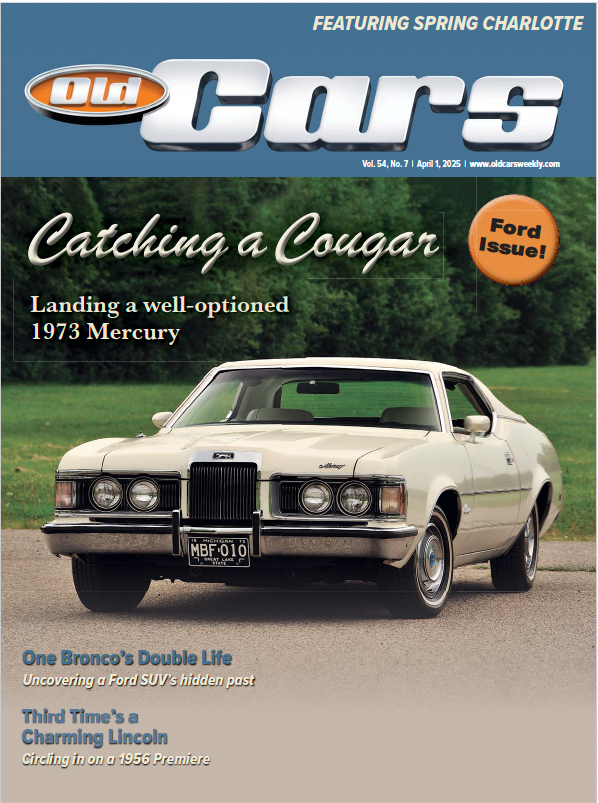The strong survived 1907 Bankers’ Panic
Car makers weathered the economic storm a century ago.
Henry Ford’s vision gained traction with the
fledgling 1909 Model T’s production reaching 17,700.
Back in 1907, when the dollar dipped and Wall Street buckled, the car industry took a dive. It was expected but never welcomed. Industrial leaders anticipated the dips, but their responses differed, company by company.
A century ago, America was in a panic. That’s right, a true, hit-your-wallet, grab-your-savings, stuff-your-cash-in-the-mattress panic. In October of 1907, banks were not insured as now. Tellers trembled at the thought of “a run” in which depositors demanded their savings in a lump sum. Bank presidents shivered at the nightmare of mobs filling their lobbies with demands for withdrawals. The economic system under free enterprise thrived off of loans and payable debts. There was never sufficient cash on hand to divvy out to every depositor in a single day. When loans were called in and accounts were closed, even the healthiest of financial institutions wavered.
With them went the economic health of the land. With them sank the present worth of the companies they finance. That included the predecessors of General Motors.
In what seemed to be a flash, the 1907 Bankers’ Panic saw the stock market drop to nearly half its worth from the previous year. Major lenders were few and seldom ready to place their cash reserves at risk in bolstering shaky ventures. What brought this on was an attempt to corner the copper market. Huge loans were provided in the failed attempt, and when those loans went unpaid, investor confidence staggered. Banks and trust companies collapsed in a domino effect. Regional banks withdrew their reserves from large banks in New York City. Mega-millionaire J.P. Morgan rallied a handful of the ultra-rich to bolster the economy — some seeing it as a bargain buying spree. Even President Teddy Roosevelt entered the fray with his bullish attitude against monopolies and in favor of the good of the common man. In 1908, the country slipped into a depression. What resulted was a fix known as the Federal Reserve System.
Buick weathered the upheaval fairly well in 1907, with calendar year production topping 4,600 units. In 1908, that figure jumped to 8,820. These were giant steps forward when compared to the 1,400 figure of 1906. Good management kept the Buick operation solvent, although it, like many other companies, was wary of financial pitfalls.
Oldsmobile, the early darling of the car industry, had made it big with 2,500 units manufactured in 1902, a phenomenal number in that era of start-up carmakers. It bettered that total with 4,000 for 1903, making the curved dash Oldsmobile the proudest little success story to date in that new decade. Numbers continued to grow: more than 5,500 units for 1904, then 6,500 for 1905. But trouble was in the offing. Production dipped to 1,600 for 1906 and lowered to 1,200 for 1907. In depression-wracked 1908, it barely broke 1,000.
Among carmakers, there were monumental dreams being played out in 1908. William C. Durant, the mogul and founder of General Motors Company, had combined some big names in the fledgling industry. GM became reality after the initial financial shock. Industrial leaders realized that there was strength in unity and diversity. GM’s formative date was Sept. 16, 1908, and the birthplace was Flint, Michigan. Durant based the formation on the success of Buick, then grabbed Oldsmobile. In 1909, he added Cadillac, then Catercar, and soon Elmore and Ewing. Oakland joined, too, eventually being renamed as Pontiac. A variety of truck companies also were added in years that quickly followed.
The new combine, shadowed by the financial debacle of 1907-’08, was becoming a risky proposition as businesses were added. General Motors was growing faster than weeds — and some of the newly included operations needed serious gardening to be nurtured to health. It would cause concern among shareholders who were still fidgety over the financial scare which they had just faced. It would result in Durant’s demise as chief operator of the conglomerate he had formed.
Henry Ford knew what it meant to lose financial control. In 1903, he started his third venture into car making. His first two had failed, and he set the blame to others. In 1903, he saw the virtue of controlling his own company and in subsequent years, did just that. A paltry 1,708 new Fords were made in calendar year 1903. Still, that was a respectable number when compared against most competitors. The production statistics held little change for the next two years, but in 1906, the number jumped to more than 8,700 units. Then came 1907.
The entire year was not bad. While financial schemes were forming and the early rumble of panic grumbled in the stomachs of a select group of financiers, greed and opportunity seemed to gloss over most early fears. False security reigned. For the Ford motorcar, it meant a banner year with nearly 15,000 units produced in the calendar year. Then, the Panic struck.
The 1908 repercussion resulted in a drastic decline to slightly more than 68 percent of the previous year’s output. That was a tough pill to swallow for a man who had lost two companies in recent memory. But old Henry was full of good tricks. He forged onward with frugality. Production techniques were improved, production time was shortened, the moveable assembly line was advanced as never before, and a philosophy of careful expenditure prevailed.
Henry’s biggest dream was about to be realized: the Model T Ford. That single model stabilized the company. Production for 1908 was hard pressed to surpass 10,000 cars. As the T took off as a 1909 model, sales literally zoomed to more than 17,700. Clearly, 1910 proved this was no flash in the pan as production for those 12 months topped 32,000.
What was the basis for Henry Ford’s success? It may have been fear of the economy. Horses were costly to maintain, feed, and stable. Cheap cars were not. Horses had limited speeds and proved unpredictably cantankerous. Not nearly so difficult to handle was the automobile and speeds were much greater. If a smart man or woman were making a choice for the future in light of the economy, a good, reliable, cheap car was the answer. And Henry Ford was at the right place at the right time. His Model T was literally a sensation when the nation needed one most.
In the case of Billy Durant and Henry Ford, a stringent national economic setback paved the way for the promise of fantastic futures in motoring. Meeting personal needs of buyers resulted in creativity unlike before.
There were other venerable carmakers that weathered the economic storm of 1907-’08. Packard concentrated on producing quality cars for the upper class and witnessed a small but steady increase in model year production: 728 units for 1905-’06, 1,128 for 1906-’07, 1,303 for 1907-’08, and 1,909 for 1908-’09. Shrewd management and solid fiscal policies assured success even as the nation’s financial system was sorely tested.
Cadillac, which was joined to GM in 1909, had come through the national nightmare in reasonably good fashion, although not without encountering production hindrances. Calendar year production went from more then 3,500 in 1906 to 2,884 in 1907 and 2,377 in 1908, before rebounding to 7,868 in 1909 and stepping ahead to more than 10,000 for 1910.
Overall, the national headache of 1907-’08 was not fatal to the idea of personal transport, nor did it stop the growth of the car industry. Other significant makes would soon be born: Chevrolet for 1912, Dodge in 1915 plus Nash for 1918, with Chrysler, DeSoto and Plymouth following in the 1920s. Their leaders had learned much in the Panic of 1907 and its aftermath.
Maybe to a degree, we can still build on that experience.
CLICK HERE to tell us what you think in the Old Cars Weekly Forums






